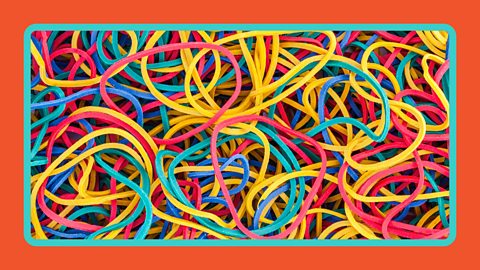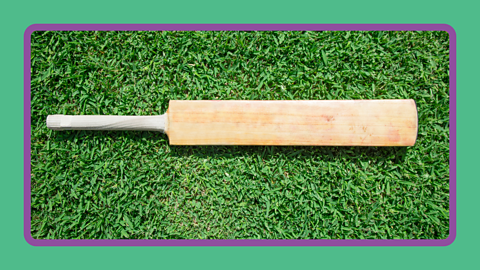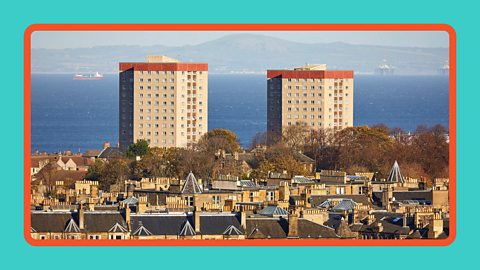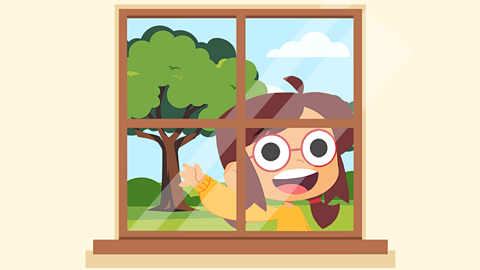
Materials and objects
In our world, we have different materials like wood, metal, plastic and glass. These materials are used to make the objects we see and use everyday.
Each material has special properties that make it suitable for certain objects. For example, wood is strong and can be used to make tables and chairs, while glass is transparent and is used to make windows.
When we want to make something, we need to choose the right material. Just like when we want to build a sturdy house, we use bricks because they are strong and durable.

Watch: Learn about materials and their properties
Anna: Materials have different properties that can make them more suited for particular objects or jobs. For example, paper is great for making books but not for building houses.
Materials can be rigid or flexible, lightweight or heavy, waterproof or absorbent, soft or hard. There are lots of common materials used in everyday objects. Metal could be used to make coins, cars, and cans because it's strong and can be cut into shapes.
Wood could be used for matches because it's easy to burn. But it wouldn't be good for making an oven. Spoons could be made from plastic, wood, or metal. But not glass because it's fragile and could break.
Some materials are man-made and developed by scientists. Raincoats are made from waterproof fabric which is ideal. It’s lightweight and can be cut into shapes to make a coat. And it's waterproof to keep the water out.
Paper wouldn't be good for making a coat as it isn't waterproof. Look, it just falls apart in water.
We can look at different materials and compare them. So, here we have some metal, plastic, wood and clay. And we're going to sort them into groups based on their different properties. The plastic and clay have been placed in the flexible pile.
The children have chosen plastic and metal as waterproof.
They have also placed metal in the shiny pile, but not clay, but they have correctly placed that in the stretchy pile.
Based on their properties, can you sort the materials found around you into groups?
Why is it made from that?
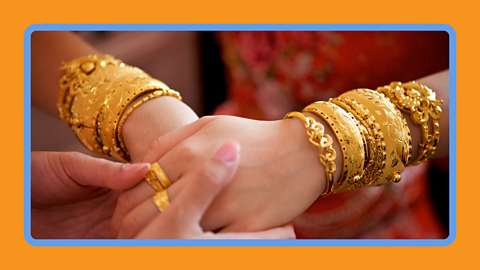
Image caption, Jewellery
Jewellery is made from metal, usually silver, gold and steel, which is a solid material known for it's malleability, which means it can be easily shaped without breaking.
1 of 7
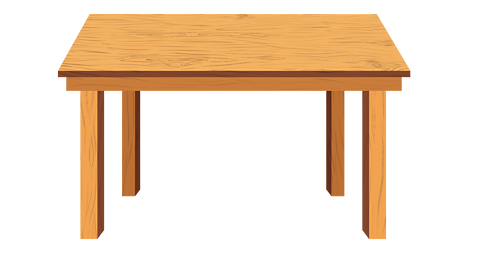
Did you know?
Wood comes from the stems and roots of trees.
If it is going to be made into something, the type of wood will be chosen for its properties and strength.
Wood is made up of a combination of living, dying, and dead cells.

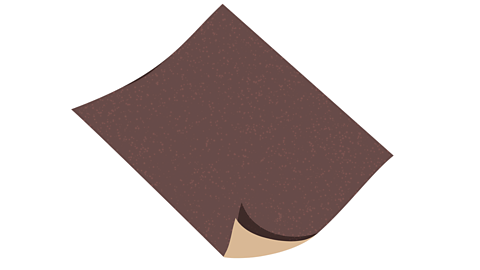
Properties of materials
Different materials have different properties such as:
- Hard or soft
- Waterproof or not waterproof
- Transparent or opaque
- Rough or smooth
- Shiny or dull
- Stretch or stiff


Fascinating facts
Glass is made from sand.
Steel, a metal, is the most recycled material in the world.
The UK has nearly 100 tree species, which provide natural wood to make various things.
Plastic waste is an issue throughout the world, with around 56% of it in the UK not recycled.
We can get natural wool for clothing and fabric from several animals in the UK, mainly from sheep and alpacas.
We find gold across the Earth but it's most plentiful in China, South Africa and Australia.
Gold isn't just found on Earth, scientists have even discovered it on the Moon.
All of the medieval castles in the UK are built from local strong materials like stone and rock. This helped to protect them from attack.

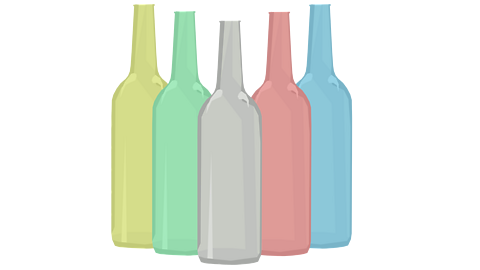
Did you know?
The first man made glass was in Eastern Mesopotamia (present-day Iraq) and Egypt around 4000BC.
Much later the Romans invented glass-making methods that made glass cheap and easy to produce.
Roman glass became very popular and has been found in kitchenware and decorations all over the former Roman Empire.

Important words
Fabric – A flexible, thin material that is woven or knitted together.
Glass – Glass is transparent, meaning we can see through it, which makes it perfect for things like lightbulbs, windows and jars.
Materials - What something is made from. This could be wood, metal, plastic or glass.
Metal – Metal can be mined from the Earth or recycled. It is extremely strong and it can be used for things like constructing buildings and cars.
Plastic – A man-made material than can be either strong or flexible. Most plastics are made from fossil fuels and are used because they are waterproof.
Properties – The features of a material, for example glass is transparent so is great for making windows.
Wood – A natural material from trees that is solid and strong.
Activities
Activity 1 – Finding different materials
Activity 2 – Materials quiz
Activity 3 - Choosing the right material
It's important to choose the right material for the object you want to make.
For example, if you want to build a house, what would the best material to use be?

What do you think?
Do you think a house would be better made from glass, wood or bricks?
You could start your answer with
- I think _______ would be better because…
- I agree with that because…
- I respectfully disagree that _______ is better because…
Activity 4 – Sort the materials and objects
Play Bitesize Primary Games
Play fun and educational primary games in science, maths, English, history, geography, art, computing and modern languages.

More on Uses of everyday materials
Find out more by working through a topic
- count2 of 2

